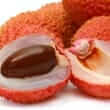Background
- Lychee (Litchi chinensis) is an evergreen tree native to the lowlands of southern China and is now grown in many tropical regions of the world.
- Lychee has been used medicinally and as a food. Lychee leaves have been used to make vegetable dye. The lychee tree bears a sweet, red fruit that is highly regarded for its purported astringent, pain-relieving, stomach tonic, and fortifying properties. Tea made from the outer layer of the fruit is said to cure skin rashes. Extracts of the roots, bark, and flowers are traditionally used to cure sore throats.
- There is a lack of scientific evidence supporting the use of lychee to treat any medical condition in humans.
References
- Aggarwal V, Kumar K, Sidhu PS. Spatial changes in some soil properties under Litchi and mango plantations. Communications in soil science and plant analysis 2005;36(17-18):2503-2511.
- Bansal A, Sood A. Development of vegetable dyes from litchi leaves. Textile Magazine 2001;42(9):47-49.
- Besra SE, Sharma RM, Gomes A. Antiinflammatory effect of petroleum ether extract of leaves of Litchi chinensis Gaertn. (Sapindaceae). J Ethnopharmacol 1996;54(1):1-6. View Abstract
- Buts JP. [Lyophilized Saccharomyces boulardii: example of a probiotic medicine]. Rev Gastroenterol Peru 2005;25(2):176-188. View Abstract
- Garrido S, Garcia BE, Echechipia S, et al. Anaphylaxis following the first ingestion of lychee fruit: clinical features and immunological cross-reactivity implications. Allergy 2007;62(8):962-963. View Abstract
- Guo JW. Effects of Litchi seed on enhancing insulin sensitivity in type 2 diabetic-insulin resistant rats. Chinese Journal of New Drugs 2003;12:526-529.
- Li M, Zheng X, Zhu Y, et al. Development and characterization of SSR markers in lychee (Litchi chinensis). Mol Ecol Resour 2006;6(4):1205-1207.
- Niggemann B, Reibel S, Hipler C, et al. Anaphylactic reaction to lychee in a 12-year-old girl: cross-reactivity to latex? Pediatr Allergy Immunol 2002;13(1):64-67. View Abstract
- Prasad VG. Evaluation of acaricides for the control of litchi mite-Aceria litchii Keifer (Acarina: Eriophyide). Pesticides 1981;15(1):22.
- Purmova J, Opletal L. [Phytotherapeutic aspects of diseases of the cardiovascular system. 5. Saponins and possibilities of their use in prevention and therapy]. Ceska Slov Farm 1995;44(5):246-251. View Abstract
- Qiu DL, Liu XH, Guo SZ. Effects of simulated acid rain on fertility of litchi. J Environ Sci (China) 2005;17(6):1034-1037. View Abstract
- Raap U, Schaefer T, Kapp A, et al. Exotic food allergy: anaphylactic reaction to lychee. J Investig Allergol Clin Immunol 2007;17(3):199-201. View Abstract
- Sivakumar D, Korsten L. Relating leaf nutrient status to fruit quality attributes in Litchi cv. 'Mauritius'. J Plant Nutr 2007;30(10):1727-1735.
- Vieths S, Scheurer S, Ballmer-Weber B. Current understanding of cross-reactivity of food allergens and pollen. Ann N Y Acad Sci 2002;964:47-68. View Abstract
- Wu Y, Pan Q, Qu W, et al. Comparison of volatile profiles of nine litchi (Litchi chinensis Sonn.) cultivars from Southern China. J Agric Food Chem 2009;57(20):9676-81. View Abstract







